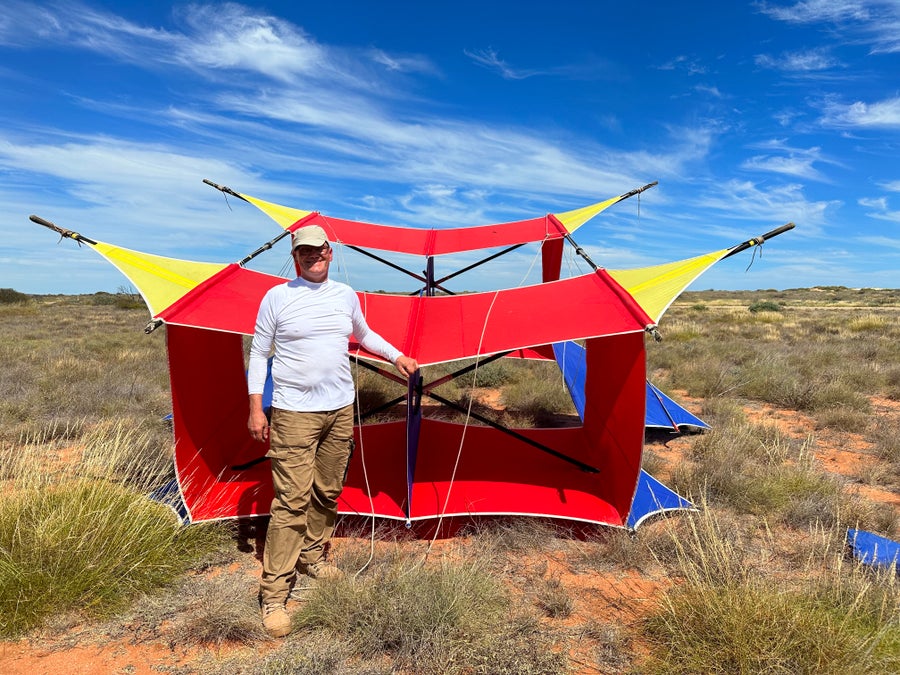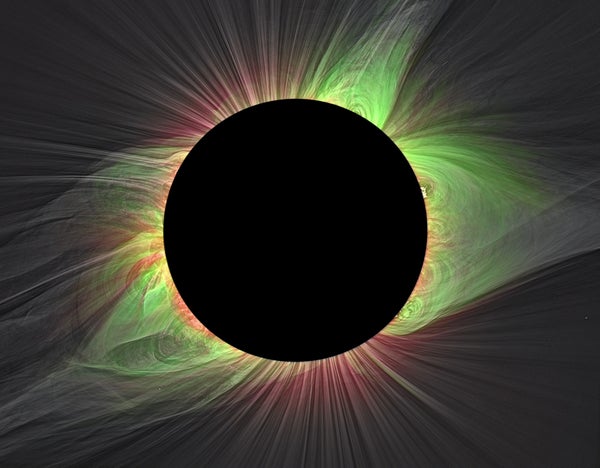This article is part of a special report on the total solar eclipse that will be visible from parts of the U.S., Mexico and Canada on April 8, 2024.
Shadia Habbal has gone to the ends of the Earth for science. The University of Hawaii astronomer leads a group of researchers called the Solar Wind Sherpas. These scientists have traveled around the world to observe 18 total solar eclipses since 1995—including in the Arctic and Antarctica. Each trip has involved two years of preparation for a few precious minutes of standing in the moon’s shadow, hoping to catch a glimpse of the sun’s corona—the feathery outer solar atmosphere that is usually outshined by our star’s light.
Yet more than a third of the eclipses the Sherpas traveled to have been clouded out. In 2021 the group trekked all the way to Antarctica and didn’t see any part of the total eclipse. That was “a brutal, heart-wrenching, miserable experience,” says Sage Constantinou, an astronomy graduate student at the University of Hawaii and a member of the Sherpas.
On supporting science journalism
If you're enjoying this article, consider supporting our award-winning journalism by subscribing. By purchasing a subscription you are helping to ensure the future of impactful stories about the discoveries and ideas shaping our world today.
The team will have another chance during the upcoming total solar eclipse over North America on April 8. And this time they have an unconventional plan for getting around the clouds. The scientists will launch a massive kite loaded with instruments two miles high into the sky, hopefully above any eclipse-obstructing clouds. The project will be the first to use a kite for solar eclipse observations. If it works, it will allow a view of the corona even if the skies are cloudy.
Earth constantly feels the effects of the solar corona. The sun produces a solar wind—a constant stream of protons and electrons that flow from the corona—and sometimes sends out massive “burps” of particles called coronal mass ejections. These particles can hit Earth and cause disruptions that range from beautiful auroras to damaged satellites. Astronomers such as Habbal want to know exactly how this solar wind forms in the corona, and a total solar eclipse is the best way to study the corona’s full extent.
The April eclipse will be especially spectacular because the sun is ramping up to the maximum point in its 11-year activity cycle, expected to occur in mid- to late 2024. During solar maximum, the corona becomes hotter and more complicated, with its usual two-lobed structure splitting into spiky flower petals.

Members of the Solar Wind Sherpas test their kite on a 600-meter-long tether during the April 2023 total solar eclipse in Australia.
Credit: Shadia Habbal
During the upcoming eclipse, the Sherpas will fly their instruments on a kite with an impressive 4,000-meter-long tether, which will allow it to soar above most mid- and low-level clouds. The red, yellow and blue kite is about as large as a two-car garage. Below it will dangle a giant hip-flask-shaped container holding a spectrometer, an instrument that can detect different wavelengths of light emitted by the sun’s corona. The container is crowned by a helmetlike solar tracking device that houses two cameras—one with a dark solar filter for before the total eclipse and an unfiltered one that will be used during totality. The cameras automatically point at the sun by searching for the brightest location in the sky.
The Sherpas tested a shorter, 600-meter-long version of their kite during the April 2023 total solar eclipse in Australia. They were able to collect data on the eclipse, but their solar tracker failed to keep the sun fully centered. This created multiple overlapping spectra of the sun that were difficult to interpret. The researchers have since worked to improve their tracker. For the April 2024 eclipse, they will use the full-length tether with the goal of proving that a kite is a relatively low-cost way to study solar eclipses from above the influence of most clouds. Their kite setup cost about $160,000 to develop, whereas the alternative—a specially modified NASA plane—costs hundreds of thousands of dollars to use each time.
The team designs and fabricates all of its scientific equipment. Constantinou’s office features a drill press, two 3D printers and a blacksmithing forge under his desk. “This is one of my favorite things about this group,” he says. “When you come up with some idea for an instrument design, instead of having to go to the shop and have them design it, I can just make it.”
The Sherpas mainly use their spectrometers and cameras to look at bright emission lines from different types of iron in the sun. The star’s extreme heat energizes its gas atoms and slams them together, causing them to lose electrons. This process produces bright emission lines that scientists measure to determine the temperature of different parts of the solar atmosphere.
The 2006 eclipse in Libya was one of Habbal’s favorites—during the last 40 seconds of totality, she captured the world’s first photograph of the corona in the Fe XI emission band, which is the light from iron atoms that have lost 10 electrons and corresponds to a temperature of roughly two million degrees Fahrenheit. Habbal’s images in Fe XI revealed previously unseen features and provided a new way of looking at the sun, says Giulio Del Zanna, an astrophysicist at the University of Cambridge, who is not part of the Sherpas.
For the April 2024 eclipse, the Sherpas have chosen to go to areas of Arkansas, Texas and Mexico because they are predicted to have low cloud cover. “Months before the eclipse, I always have eclipse nightmares,” Habbal says. “Like, either we went to the wrong place or we didn’t have things ready in time.” She has spent sleepless nights worrying about problems with the kite. “But we shouldn't shy away from doing things that are out of the norm or thinking outside the box as scientists,” Habbal adds.
